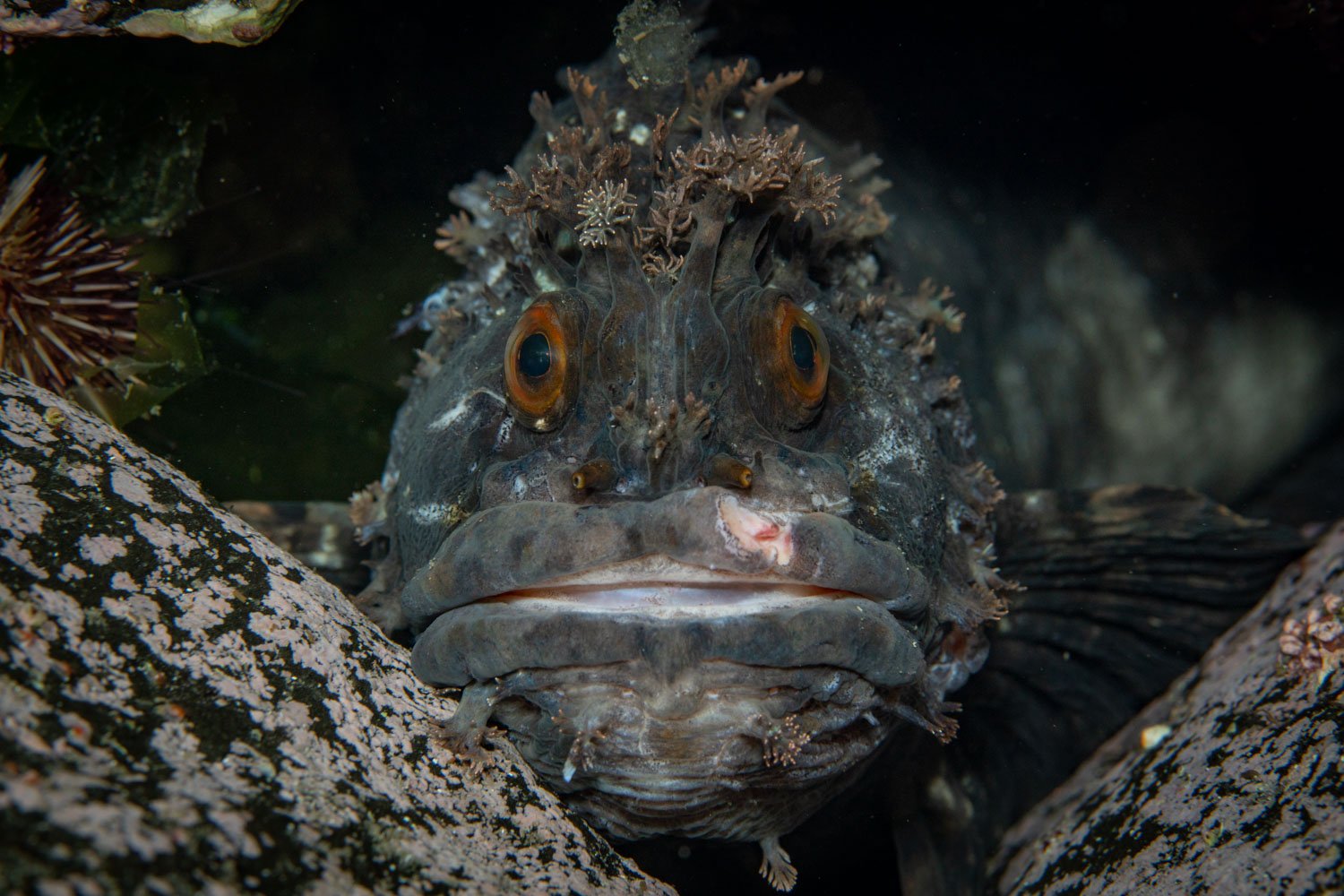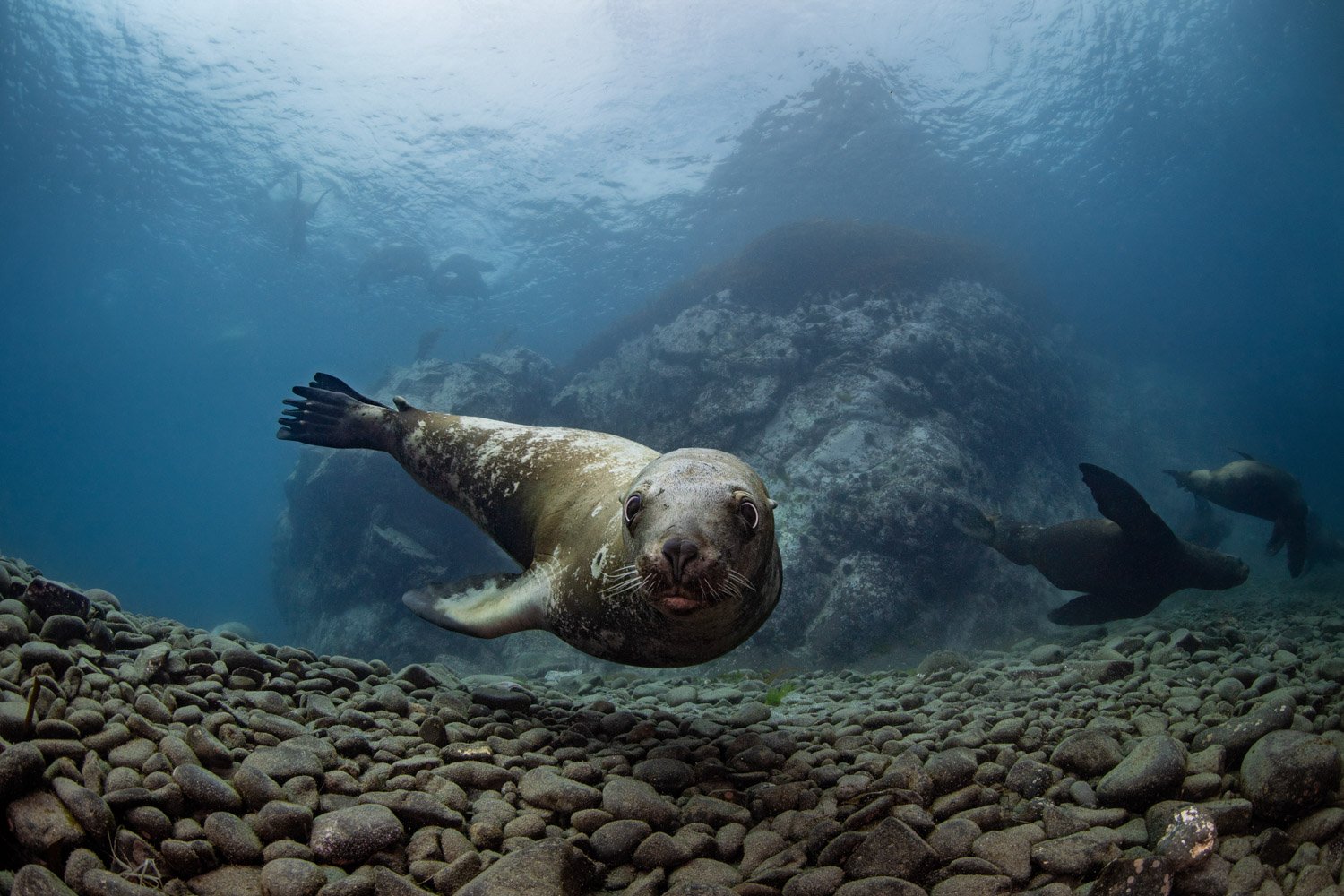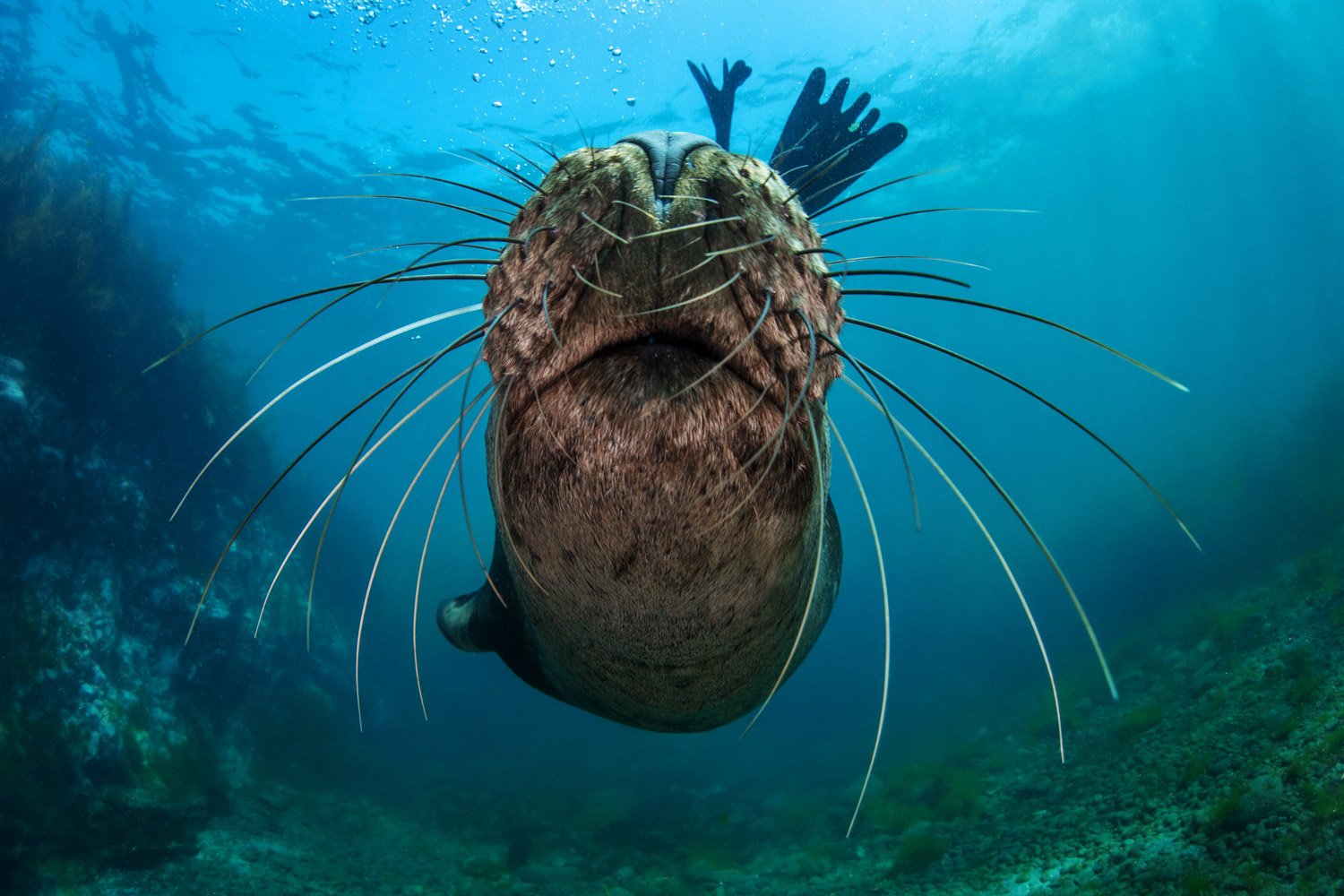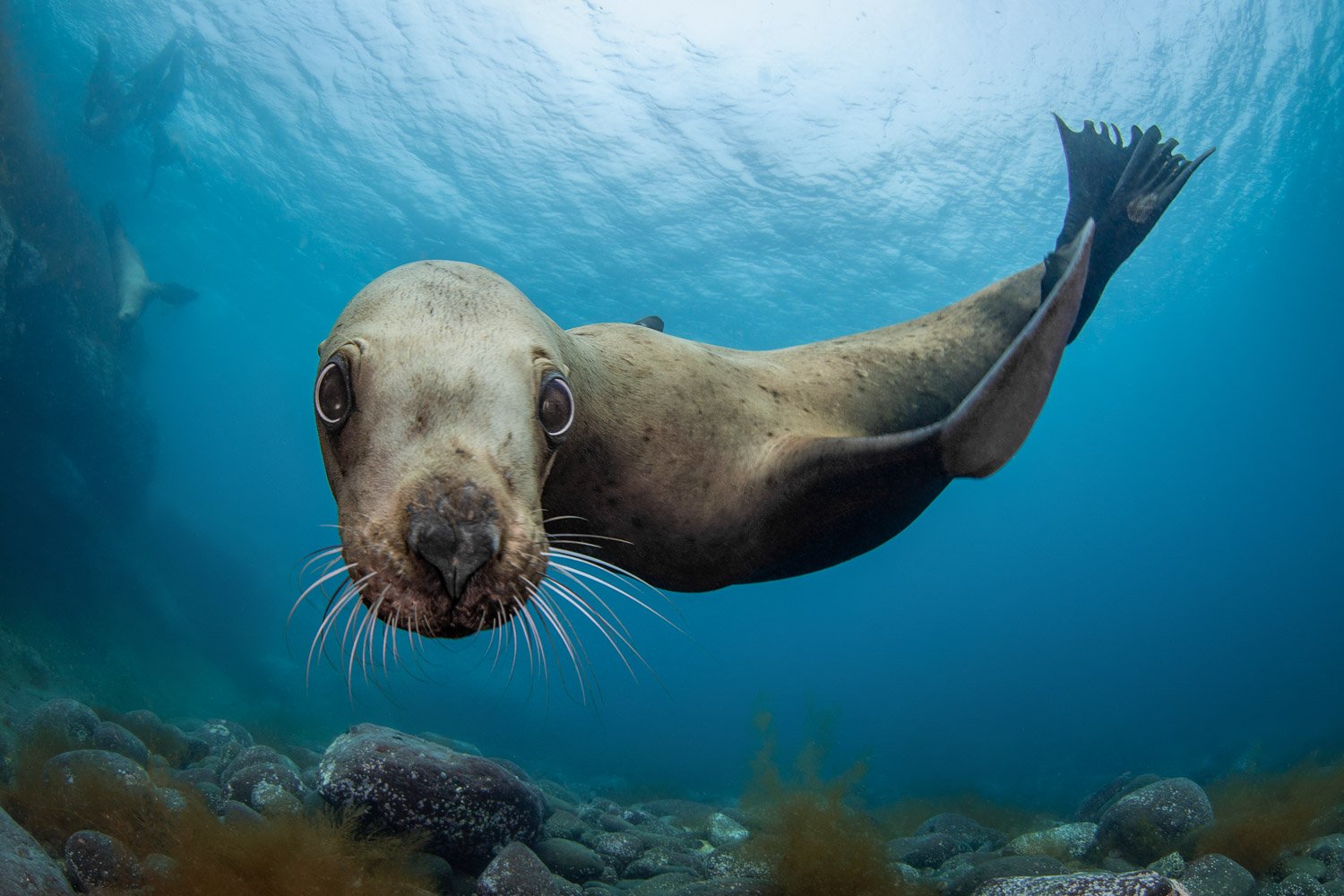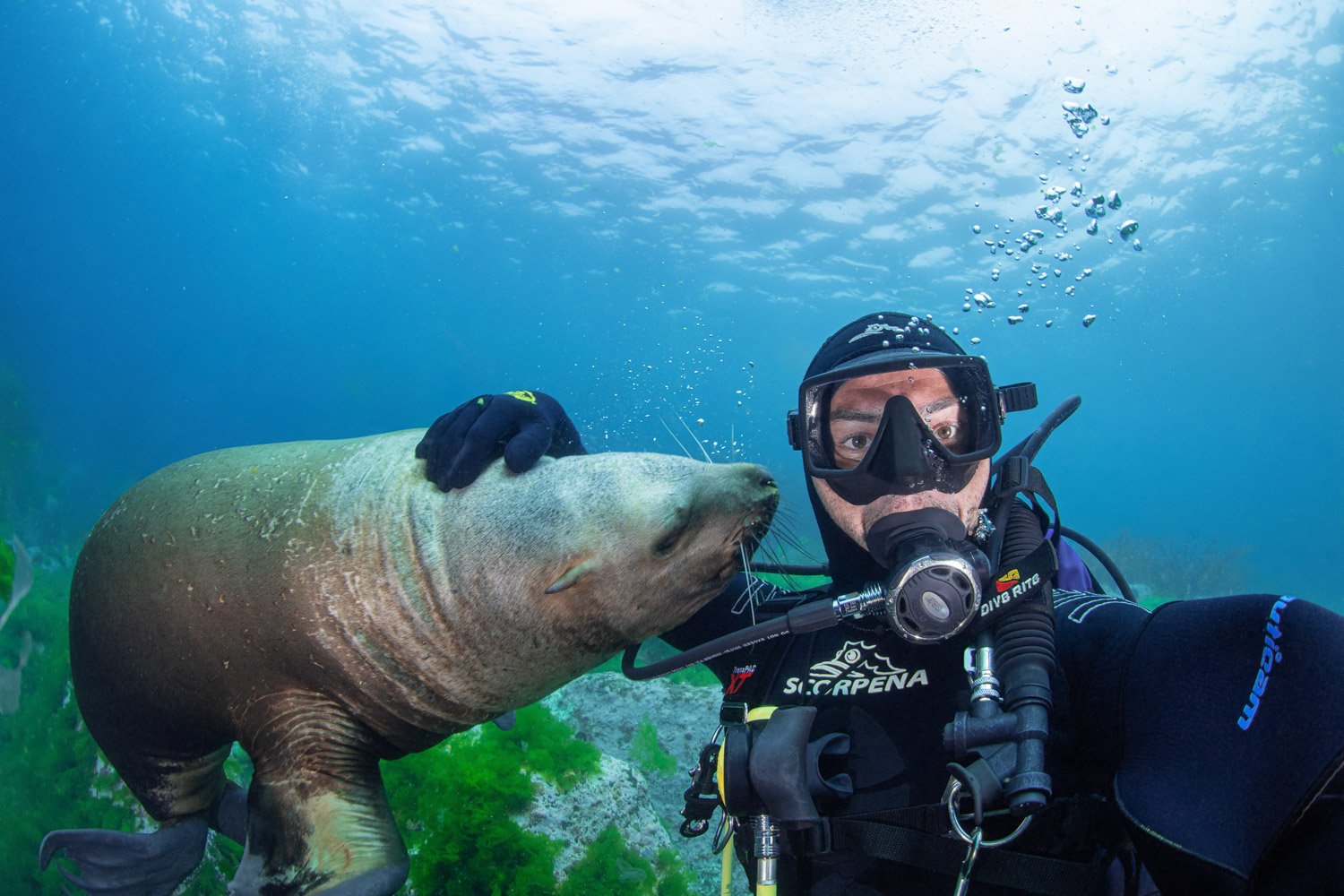The Far East of Russia is a majestic place. The vast territory bordering Japan and the US by sea is sparsely populated - about 1 person per square kilometre. For sake of statistics - this is 300 times less than its neighbours in Japan. This may sound staggering, but much like comparing two different planets, the statistics are no more than numbers.
The aptly named “Far” East of Russia is genuinely far removed from the “main” and European part, and not just due to the nine-hour flight. It has its own special climate, wild, impassable landscapes, and indigenous population living their own separate lives. Personally, the allure of this place is in the immense variety of nature and wildlife untouched by man. I’ve traveled to the Far East several times, and never cease to be amazed by my encounters with bears and whales and seals, and I believe that this sense of wonder is an essential part of a human being’s (most certainly photographers’) happiness.
The climate here is harsh and the sea is cold and turbid, making it difficult to dive and shoot. However, this time we were heading to a place unlike any other.
“Get a thinner wetsuit!” my colleagues told me.
We voyaged to Moneron Island - where the warm Tsushima current creates its own unique local climate, and thus - a special ecosystem, where subtropical species live in the clear and warm sea. Most astounding of all is that these are generally unexplored waters!
Moneron is a small volcanic island 40 km from Russian Sakhalin, and 90 km from Japan. In fact, it was part of Japan until the middle of the 20th century. It only became part of Soviet Union after the Second World War. This whole time Moneron was closed to the public, but we were finally given access this year.
On the first dive were struck with vivid colours and bustling underwater wildlife. A diverse concoction of northern sea anemones and warm-water Haliotis (molluscs), kelp, spectacular-looking Japanese warbonnets (on this picture), subarctic jellyfish and giant predatory starfish - Plazaster Borealis, which are not found anywhere in Russia, except for Moneron.
“Largas” - northern spotted seals, whose rookeries are found in the rocky bays of the island, are timid and swim away as soon as they see us. But it’s worth hanging around next to the rookery for an hour or two - as interest picks up, the spotted seals creep up from behind, carefully biting and tugging at your flippers.
But we were in Moneron with a different goal and had to stay focused despite all the exciting distractions. Steller sea lions in clear and warm water - I found my heaven on Earth.
Steller sea lions are large northern species of sea lion or “eared seals”, whose males can weigh up to a ton. Their rookeries on Moneron are large and noisy with a very distinctive smell spreading hundreds of meters. Basically, this is an island of sea lions! In fact, that’s how Moneron was called in translation from the language of the Ainu, the first ancient inhabitants of the Japanese islands.
At the rookery, sea lions growl as they see our boat and clumsily wobble from flipper to flipper. But everything is different underwater - here they are fast, graceful and agile. Now it’s us that are out of our element and suddenly object of interest - strange men with weird things on their back arouse great curiosity in sea lions. Cautious divers would say that this interest is too intense, and I would answer them this - I’ve had the pleasure of diving in many different places all around the world, but there is honestly nothing better than diving with Steller sea lions (in my humble opinion!).
Let me set the scene - dozens of sea lions rushing past, blocking the sun, breathing out bubbles and playing with bits of algae. Then they stop, observe, and poke your mask with their muzzles, looking deeply into your eyes. They grab your hand with their flippers, nibbling at everything: your limbs, head, fins and regulator hoses.
Although their bites are very noticable, they never cross into actual pain and aggression. I liken the sea lions to boisterous kids who were bored in the class, finally released into the wild and given a new toy. The concept of “play” is one of the most complex topics in psychology, not only in animals, but humans too. Very few animals exhibit playful behaviour, and the ones that do are some of the most “organized”. What can be said for sure is that play is considered an “unproductive” activity - as in it’s not essential to survival. The purpose of play is simply pleasure, and we tried to give our new sea lion friends just that!
We dived with sea lions for several days. Our bodies were covered with bites and scratches, our wetsuits with holes, and our hearts with indelible imprints of love for these animals. The expedition was coming to an end, we shot lots of material, and I thought we’d experienced all that Moneron had to offer. But on our last day - I met her (or him, it’s very difficult to distinguish a female sea lion from a young male).
I swam away from the rookery to take pictures of the breathtaking underwater scene, but soon felt a slight nudge from behind. This sea lion separated from the group and wanted to play one-on-one. She (let’s assume it was a female) had a distinctive scar on her right shoulder, so it was easily to spot her when she surfaced to breathe and swam back to play.
I sank to the bottom and played my part in the game. She brought me bits of kelp so that I could throw them back to her, hugged me with flippers, lay down on the sea floor next to me and rolled over so that I could scratch her belly. Some time later, another sea lion tried to join in, but she drove him away, clearly stating that this was her human! It’s truly amazing to have this kind of interaction with a wild animal - she took a liking to me, and the feelings was, of course, mutual. I put my camera down on the ground so as to not be distracted with technicalities of photography and miss the magic of our encounter. I wanted to see my new friend with my actual eyes, not through a viewfinder and be fully present in the moment with all my senses. After about an hour, I was running out of oxygen, but could not part without taking a cheeky farewell selfie.
In my life I’ve had the great fortune of exploring distant lands and feasting my eyes on places of awe-inspiring beauty. And now that I’ve had some time to reflect on this trip, one thing is clear - there are fewer and fewer places like Moneron on our planet. Humanity is advancing, and nature is receding, and this confrontation with inexorable progress will stop destroying unique places of untouched nature only when we learn to limit our entitlement to the planet. In a sense, we need to keep these places away from ourselves, protecting them as carefully as female sea lions protect their cubs. When I go back to Moneron (and I will definitely go back), I will look for a sea lion with a scar on her right shoulder, I really hope that we will see each other again!




